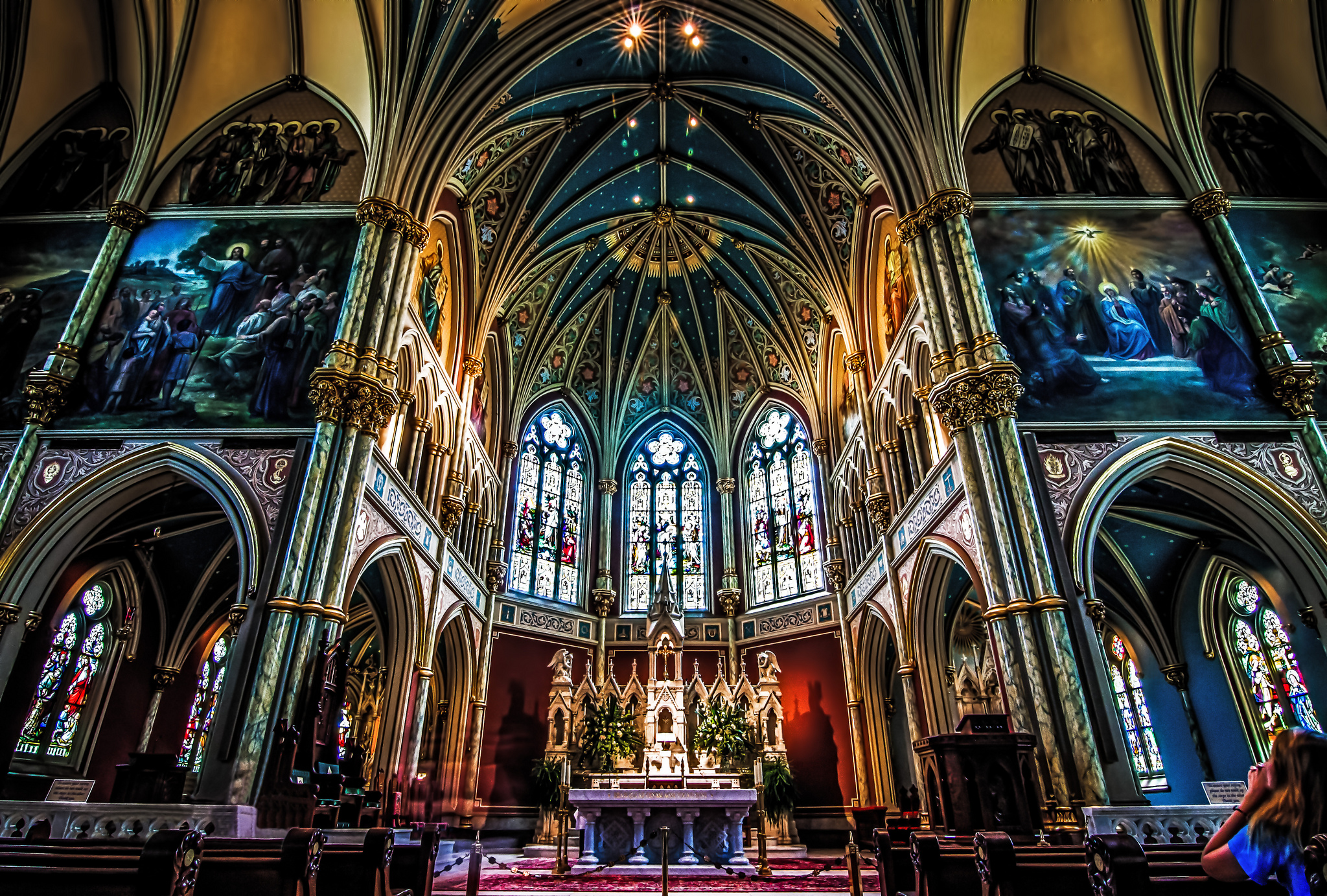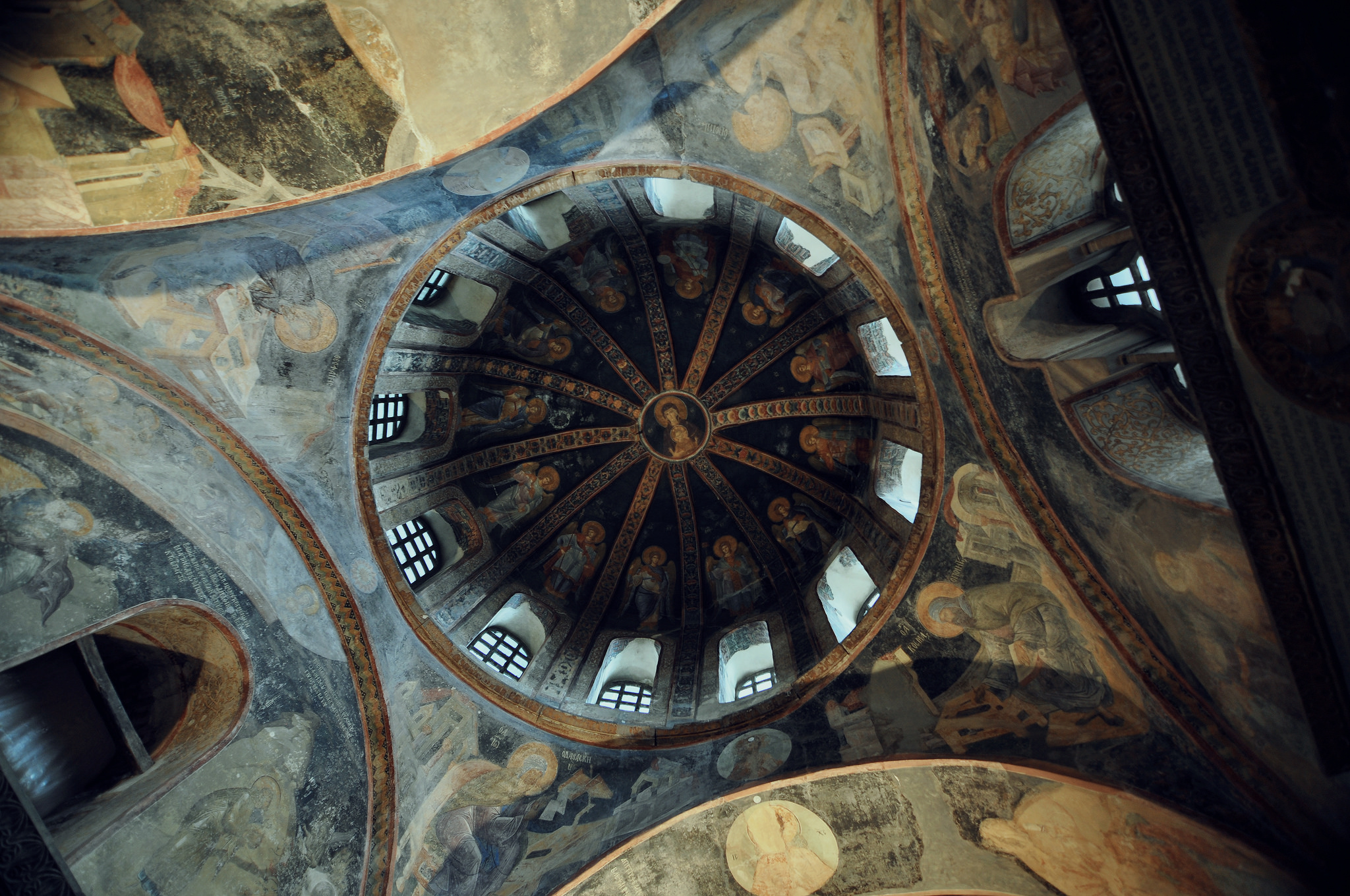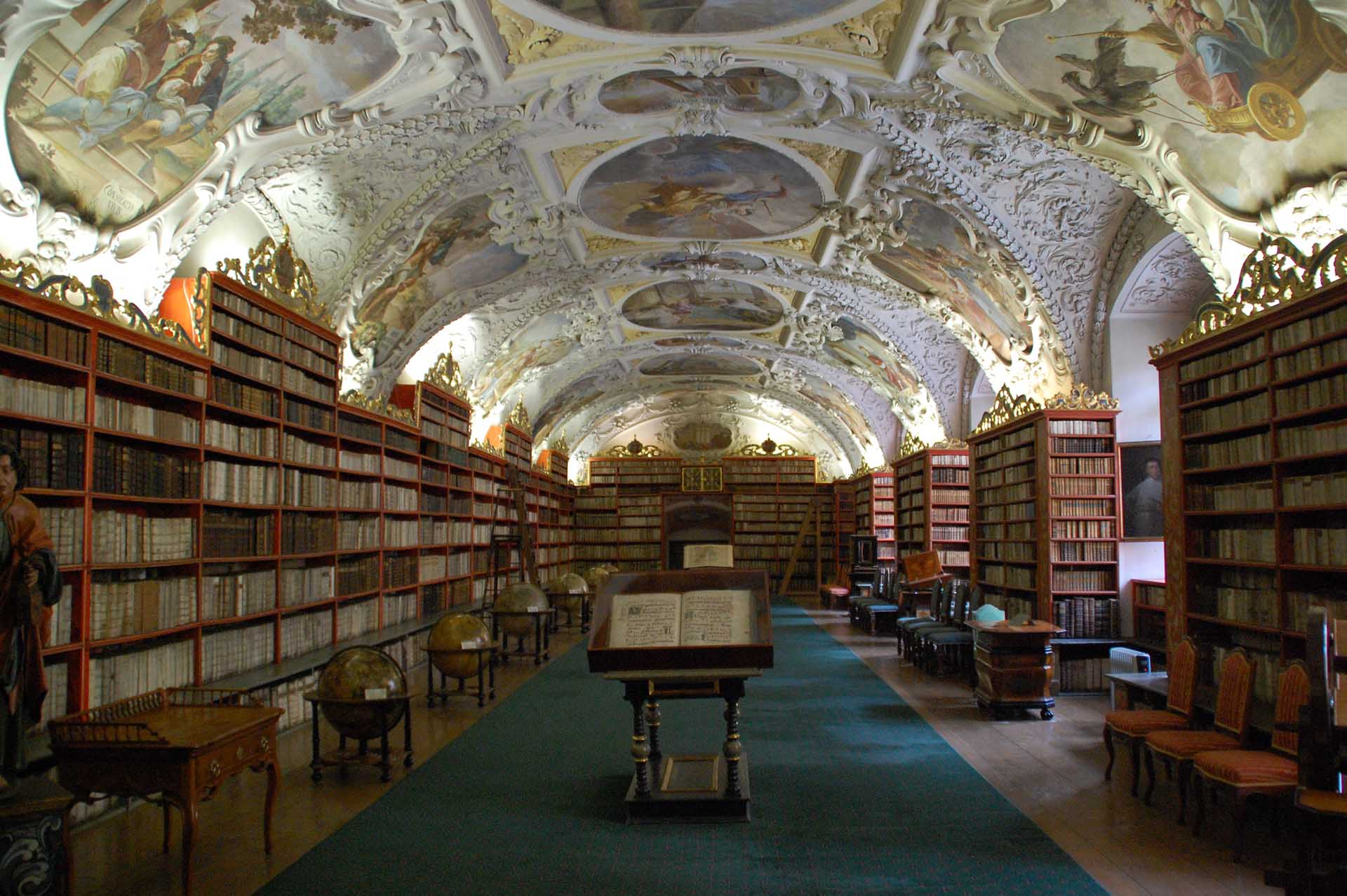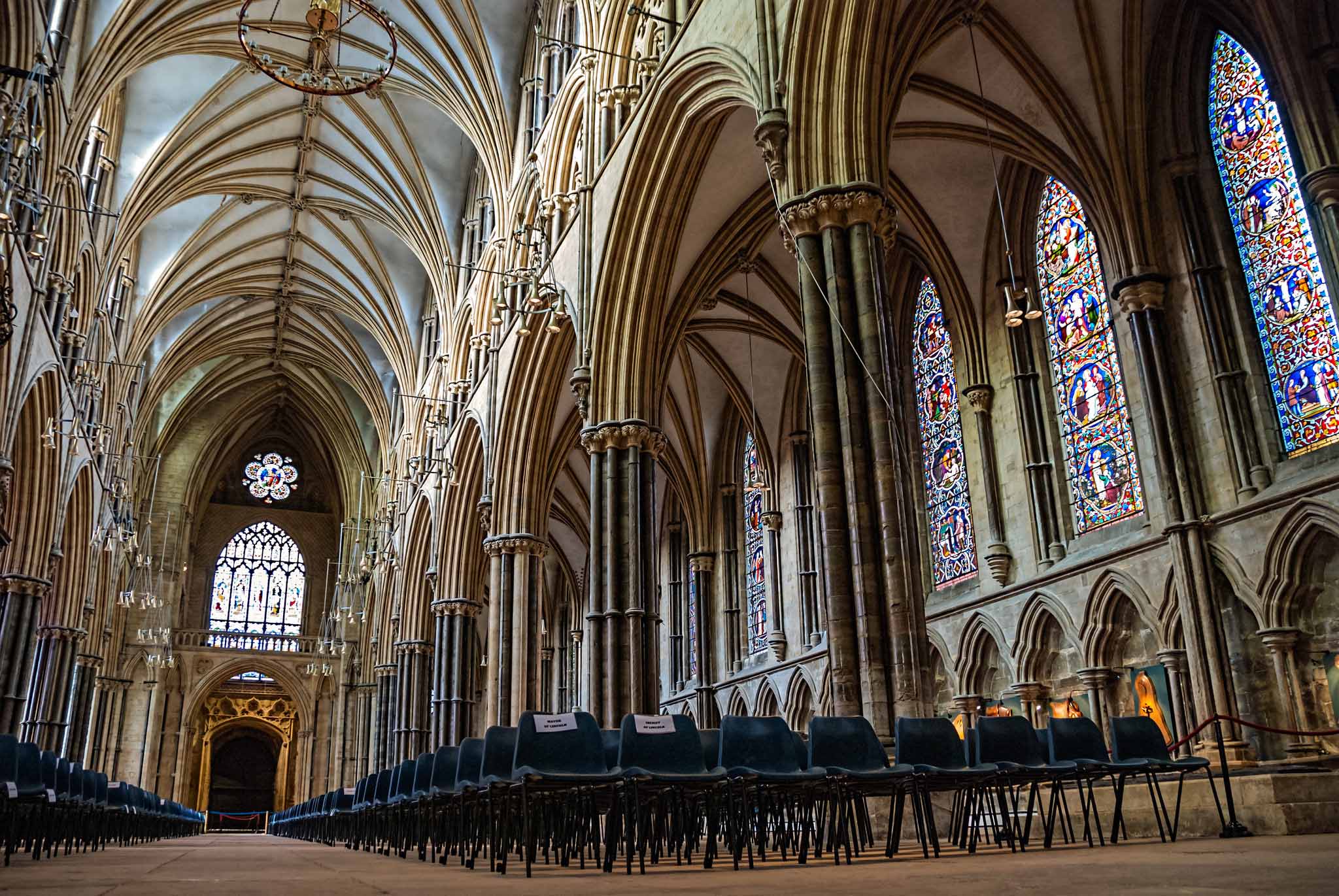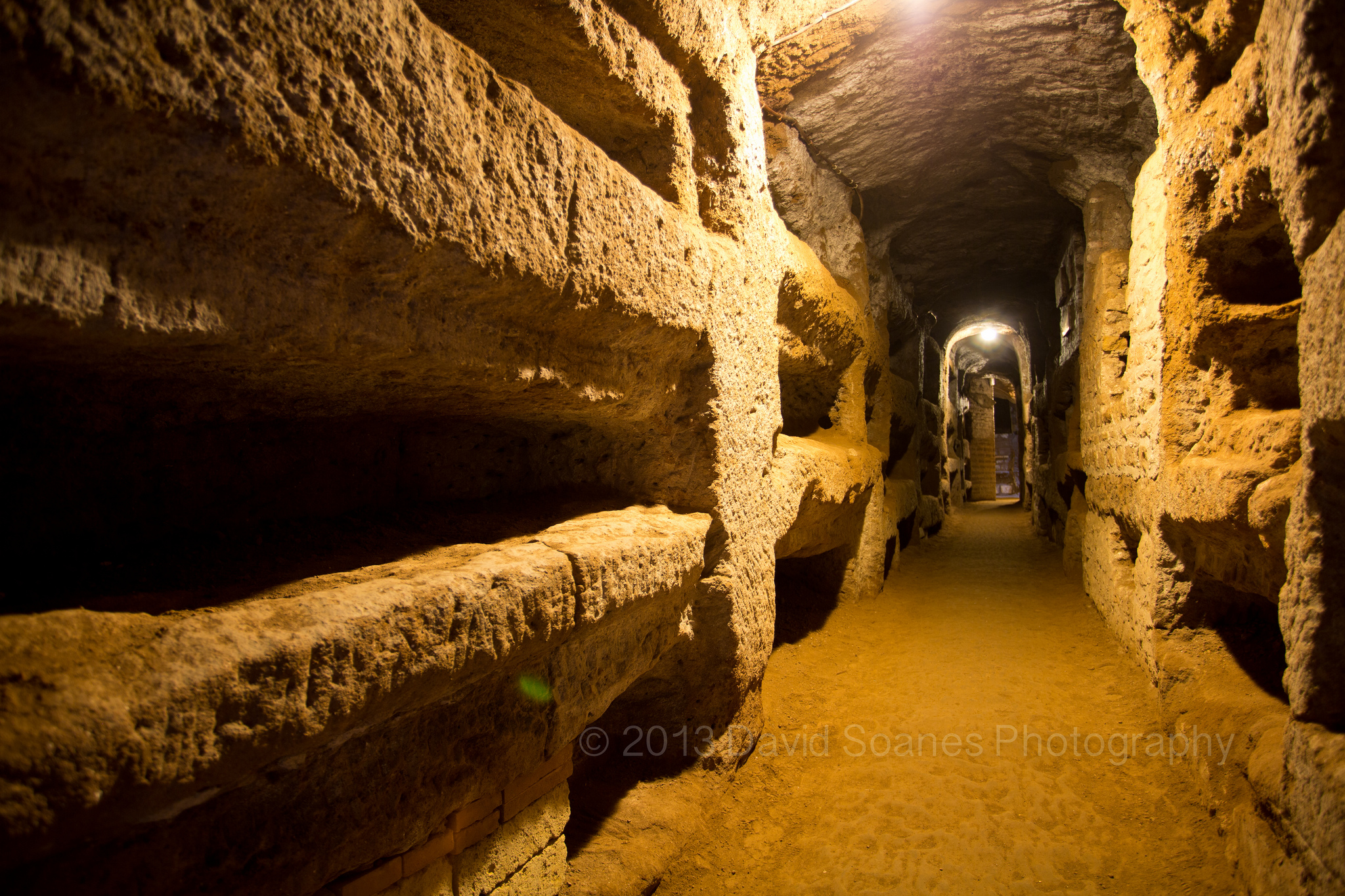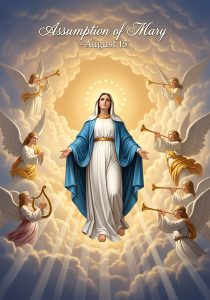
+Our Lady’s Glorious Assumption+
(This excerpt is taken from The Life of the Blessed Virgin Mary, written by Rev. B. Rohner, O.S.B. in 1897, before Pope Pius XII proclaimed that the Assumption of the Blessed Virgin Mary into Heaven was a dogma of faith.)
CHAPTER XLVI. THE BLESSED VIRGIN IS ASSUMED INTO HEAVEN
Although the holy Church has not yet raised it to an article of faith, and although we are not in possession of detailed satisfactory evidence as to the miraculous manner in which the assumption of the Blessed Virgin was accomplished, yet there cannot be a doubt but that, not only the pure soul of the blessed Mother of God was admitted into heaven, but also her immaculate body; for it had been the dwelling-place of the Most High, and the sacred Ark of the Covenant in the New Law. To a believing soul it is sufficient to know that this really took place, although Divine Providence has not been pleased to clearly enlighten us on this point, nor, indeed, on many others. In the first place, I shall relate to you, Christian reader, what the earliest Christian writers have left in their writings concerning the glorious mystery of the Assumption. Then I shall furnish you with the reasons why we may believe unconditionally this mystery; nay, must believe it, although no direct decision of the holy Church obliges us to do so.
THE EMPTY TOMB
After the solemn and touching ceremony of laying the virginal body of our blessed Lady in the tomb, t h e apostles and other believers, as already stated, remained at the grave for three days. What kept them there? Their great love and profound respect for the Mother of Jesus would not permit them to think for a moment in their hearts that this immaculate tabernacle of the Redeemer would be given over to corruption. They remembered vividly and joyfully the glorious resurrection of their divine Master on the third day. An interior voice, perhaps even a special revelation, informed them that Christ, who had Himself arisen, would be pleased to awake His highly favored beloved Mother also from the sleep of death.
Deeply impressed with this conviction, they opened the grave on the third day. Or, if we choose, we may safely adopt another opinion given and held by many learned and pious writers. These teach that one of the apostles, having arrived in Jerusalem too late to see the remains of the Blessed Virgin, was over-powered with grief and disappointment. He begged that the stone enclosing the tomb might be removed just once more, to enable him to gaze for the last time on the beloved countenance of their departed guide and Mother. In expectation of this happy privilege, he had travelled incessantly, night and day, from his remote mission. Moved at his deep piety and earnest pleadings, the other apostles granted his wish.
In anxious expectation, and wavering between hope and fear, they lifted away the heavy stone. A sweet fragrance immediately came forth from the grave. A supernatural brightness arose and enveloped all present. The flowers that had surrounded the body revived and again assumed their most beautiful colors. But the fairest and brightest flower, the sacred remains of the Mother of Jesus, was not there. A cry of astonishment and joy fell from the lips of all: “She is risen, she is not here!” Yes, the Blessed Virgin had arisen from death, and with body and soul had been conducted into heaven. Such was the firm belief of the wondering apostles and their fellow-watchers. It would be absurd to suppose that robbers could have rifled the grave and carried away the body; for the whole gathering of apostles and other friends had been continually on guard. Hymns of joy and exultation were now sung in honor of the glorified Queen of heaven. As the happy news spread far and wide. new courage and lively faith were awakened in the
souls of all believers. Here the almighty God had plainly given incontestable evidence that He was near His holy and beloved Church, with His protection and grace, and ready and willing to reward the love, fidelity, and sacrifice of His friends.
PROOFS OF THE ASSUMPTION
From the days of the apostles down to our own time it has been the unbroken universal belief of the whole Catholic world that the blessed Mother of God has been admitted to the presence of God, not alone in soul, but also with her pure and now glorified body. But, Christian reader, although you believe firmly and joyfully this miraculous assumption of your blessed Lady, yet it may not be superfluous, for a still better understanding of the mystery, for an increased faith in it, and perhaps as a help to defend it, to give the grounds on which this Catholic conviction is based. Briefly, then, I would lay before you, for your study and meditation, the following eight points:
(a) The festival of the Assumption of the Blessed Vir- gin was evidently observed even in the very earliest years of Christianity as a joyful feast commemorative of this miraculous event. Many learned writers have made good attempts to prove that the feast was established by the apostles and celebrated in their time. It is certain that during the reign of the Emperor Constantine the Great, who died May 22, 337, this festival used to be celebrated in the East with great devotion and pomp. In the Western Church. it has been a festival of the first class ever since the sixth century. Even from the very prayers used in the Mass and divine office on this day, it is clear that the church commemorates the translation from earth to heaven, not only of the soul of our blessed Lady, but also of her sacred body.
(b) As early as the year 451, Marcian, the Emperor of the Eastern Empire, summoned Bishop Juvenalis to the court at Constantinople in order to get his opinion on this question; namely, whether the body of the Blessed Virgin was still in the grave at Jerusalem or not. The Emperor’s intention was, if the body were to be found, to have it translated to the church recently erected in his capital by the Empress Pulcheria, and which was to be dedicated to God under the invocation to the Blessed Mary. Bishop Juvenalis stated the tradition universally admitted in Palestine, namely, that the body as well as the soul of the Blessed Mother of God had been translated by angels into heaven. (Niceph. Hist. Book II.) In fact, at no period in Christian history has anyone claimed to have seen any relic from the sacred person of and expose to public veneration every relic deserving such honors, not a word has ever been said of any relics or these sacred remains.
(c) In the Western Church, the holy bishop, St. Gregory of Tours, also gives testimony in his writings, published about the year 550, of the assumption of the Blessed Virgin. Not many years later one of the most saintly of Popes and renowned of church writers mentions the universal belief in this mystery. Pope Gregory the Great, who died on the 12th of March, 604, composed for the Mass celebrated in honor of the Assumption the following prayer: “We beseech thee, O Lord, that we may obtain real assistance, through the solemn celebration of this day on which the Mother of God died indeed a corporeal death, but could not be detained in the bonds of death.”
(d) The Greek Church considers this general belief so well founded, that in a council held in Armenia in the year 1342, the assembled members issued the following declaration: ” Let everyone know and understand the Church of Armenia holds and teaches that the holy Mother of God, by the power and virtue of Jesus Christ, was translated into the kingdom of heaven, both body and soul.” Again this same Eastern Church, when repelling the calumnies which the so-called Reformers, Luther and Calvin and their followers, uttered against the Mother of God, declared in a council held in Jerusalem in the year 1672: “It is beyond all doubt that the Blessed Virgin Mary is not only a great and miraculous sign on earth, because although she brought forth God in the flesh and yet remained a virgin, but she is also a great and miraculous sign in heaven, because she was translated thither body and soul: for although her immaculate body was enclosed in the tomb, yet, like the body of Our Lord, after three days it was released and admitted to heaven.”
(e) Death is the wages of sin. As God had wrought the greater miracle of preserving Mary from every stain of even original sin, it was eminently becoming that He should not omit a lesser miracle and one expected from His justice, mainly to avert Mary from the wages of sin, death in its destructive form.
(f) This precious body was the miraculous source in which the body of Christ, the Victor over death, the grave, and corruption, was itself formed. How then could this virginal flesh fall a prey to death and corruption?
(g) As Mary had given her virginal body to the King, the Blessed Virgin of glory to be His dwelling-place, it is right and proper that this same Lord should give His kingdom of eternal glory to be her resting-place. St. Bernard thus beautifully expresses this sentiment: “When the Lord came into this world, Mary received Him in the noblest dwelling on earth, in the temple of her chaste womb. Therefore, on this day has the Lord exalted her to an honorable throne in His heavenly kingdom.” What human imagination can picture to itself the splendor with which our glorious Queen was carried up to heaven, the reverence and love with which the heavenly hosts met and greeted her, the songs of triumph amid which she was conducted to the presence of her divine Son, the affection with which He received her, and placed her above all other creatures.
(h). If it be objected that it is altogether new and un- heard of for any member of the human family to be translated in body from this life on earth to heaven before the general resurrection of the flesh on the last day, we should recall to mind the case of the patriarch Enoch, who, according to the clear and undoubted testimony of Holy Scripture, was carried in body by the power of God from earth to heaven. Moreover, the prophet Elias was borne to heaven in a fiery chariot drawn by fiery horses. These evidences and many others which might be adduced, and which may be found in Brennan-Businger’s “Life of Christ.” are sufficient to give to the doctrine of the bodily assumption of the Blessed Virgin a solidity and a certainty that cannot be given to any other fact in ancient history. For this reason the renowned Pope Benedict XIV. has declared it godless, unintelligible, absurd, and foolish, to doubt this consoling, well-grounded doctrine. The Holy See abstains from defining the Assumption to be an article of faith. Happily it needs no formal declaration; for all Catholics believe it firmly and willingly.
CHRIST’S ASCENSION AND MARY’S ASSUMPTION
There is, however, an essential difference existing between the triumphant ascension of Our Lord and the assumption of His blessed Mother. This difference is well described by St. Peter Damian, a renowned doctor of the Church. He says: “With the eyes of thy soul observe the Son ascending and the Mother carried. Thou wilt discover a manifestation of glory in the ascent of the Son, and the same in that of the Mother. For the Redeemer ascends to heaven in the power and dominion of His strength, as Lord and Creator, surrounded by the homage of the angels, but not aided by any help from them.
But Mary is carried to heaven, and as a sign of her supereminent grace, under the escort and with the help of the angels, for it is grace and not nature that elevates her. Hence this day is termed Assumption, while Our Lord’s day is styled Ascension. For power is something different from mercy, and to the Creator alone belongs the right to transcend by His own inherent power the forces of a nature created by His own hands. ‘The entire glorious company of the heavenly spirits came forth to meet the ascending Saviour. With them were united the hosts of the souls of the just, whom Jesus was leading, and thus conducted by both in triumph to the Father, He sits in equal glory at the right hand of Majesty. The triumphal procession that came to meet the approaching Virgin is far more splendid and glorious. For as she was entering the palace of heaven, the Son Himself came forward, with the whole heavenly court of angels and just souls. (Sermon on the Assumption.) Now is fulfilled completely the prophecy of the timid Virgin of Nazareth, which many years before she had pronounced in holy youthful enthusiasm: “Behold from henceforth, all nations shall call me blessed; for the mighty hath done great things to me. He puts down the mighty from their seat and hath exalted the humble.” (Luke I. 49.)
I, too, praise thee and call thee blessed, O glorious Queen of heaven. I, too, rejoice that thou hast been raised to a throne of everlasting glory. O that it may be permitted to me one day to see thee there, face to face, to glorify thee, and with all the angels and saints to love thee forever and ever. Amen.
ASSUMPTION OF OUR LADY
O Mother pure, our hymns to thee ascending,
Proclaim thee Queen of the eternal years;
Oh let our hearts earth’s joys and sorrows blending
Place at thy feet their rosary of tears.
Awake, my soul, list to the angels rending,
The vault of heav’n with joy that stills all fears
O Queen of sorrows, for our follies grieving,
We cast ourselves distressed before thy throne;
‘Tis thou hast taught our lips to still be weaving,
The words of hope amid the words of moan.
We have no hope, alas! of e’er retrieving,
Our ways, unless thou keep us as thine own
O Lady Queen, behold thy children praying
To be received beneath thy mantle’s fold;
Thou wilt not frown upon our late essaying
To wrest our sinful hearts from Satan’s hold.
Oh, stay our wilful feet from wayward straying,
And bind them fast to thee with love’s pure gold.
F.M.S.

